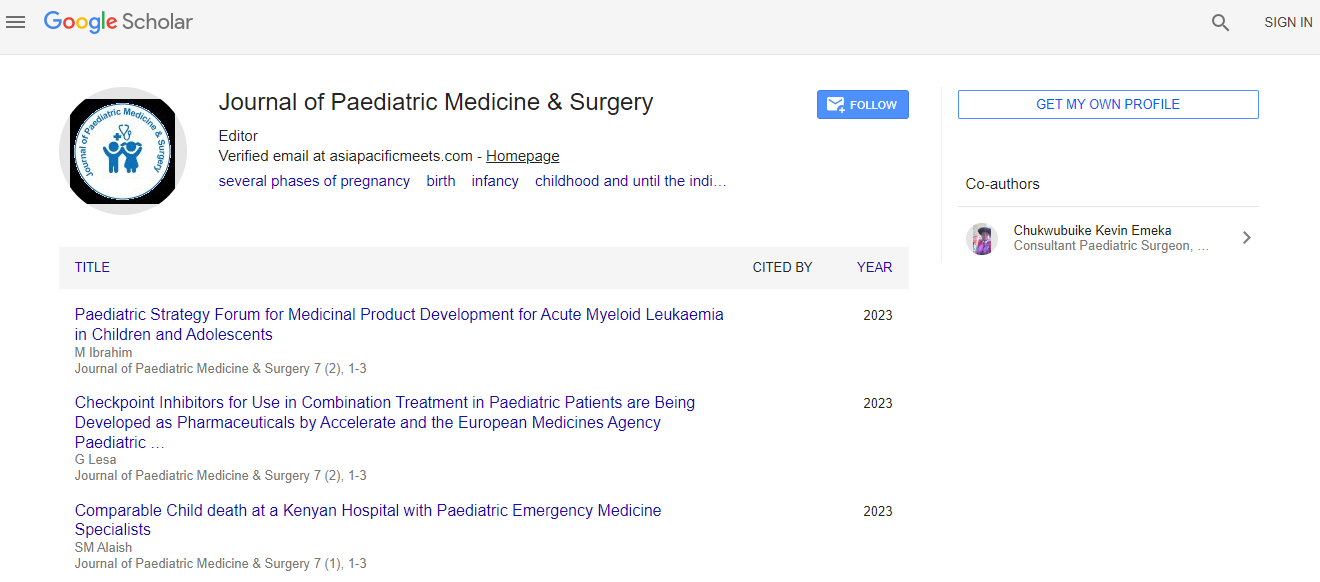Neuro Ophthalmology 2018: Relationship between temperament and binocular vision for kindergarten children - Chien-Ju Lin - Chung Shun Medical University
*Corresponding Author:
Copyright: © 2018 . This is an open-access article distributed under the terms of the Creative Commons Attribution License, which permits unrestricted use, distribution, and reproduction in any medium, provided the original author and source are credited.
Abstract
Introduced and Purpose: Many clinical optometrists have indicated that binocular vision might be influence on children’s behaviour or performance, but is short of references for verifying. This study gives a swift of the binocular anomalies seen in elementary school children identified with reading problems. Reading is a multifactorial process that is influenced by psychological, physiological, environmental, sociological and linguistic factors. From an optometrist's perspective, reduce in reading ability may be associated with poor visual acuity, unstable binocular vision, or ocular disease. It is therefore significant that people with poor reading comprehension receive a comprehensive oculo-visual assessment.
Although case history is one of the critical modules of an oculo-visual assessment, younger kids may be ignorant of their visual difficulties, or are unable to describe their associated symptoms. In cases where the patient is draining their full refractive correction and displays no signs of ocular disease, but describes symptoms of asthenia, an investigation of the binocular vision system is of particular importance. Literature has shown an association between poor reading performance and binocular vision disorders. These disorders include poor pursuits, abnormal convergence, and low amplitude of accommodation, accommodative in facility, poor fusional vergence reserves, and abnormal fixation disparity. In Ontario, Canada, children who read below their expected grade may be eligible for an Individual Education Plan (IEP) provided by their local school board. An IEP is a special education plan designed to modify the curriculum for a particular student in order to assist the student in achieving his or her learning goals. In these cases, comments from parents and teachers such as eye rubbing, close working distance, or avoidance of near work, provide additional information.
Also, the purpose of this study was to investigate the relationship between temperament and binocular vision for kindergarten children.
Method: There were totally 32 healthy children age from 5 to 6 participated in the study, parents and school teachers were also included. Binocular inspection included refractive errors, habitual distance and near visual acuity, dextrocularity or sinistrocularity, cover-uncover test, pupillary response, fixation, pursuit, saccades, stereo acuity, colour vision, near point of accommodation and visual-motor integration (The Beery-Buktenica Developmental Test of Visual-Motor Integration, VMI). In addition, an questionnaire about children health, nutrition, upbringing, sleep hours, leisure activities, TV and mobile or iPAD use; attaching Temperament Assessment Battery for Children (TABC) were all asked to surface by parents and school teachers before binocular examination.
Result: There were 14 boys (43.8%) and 18 girls (56.3%), participants showed lower BMI index (n=28, 87.5%), high percent of irritable physique (n=18, 56.3%) and sleep inadequate (n=23, 71.9% under 8-9 hour). Most children were the eldest child in their families (n=25, 78.1%) and 10 of them (31.3%) were singleton. Binocular examinations indicated all participants had more or less refractive errors, 40.6% (n=13) children were myopic; 37.5% (n=12) were hyperopic; 84.4% (n=27) were astigmatic and 31.3% (n=10) were anisometropia. It was astonished that 8 (Distance VA) to 10 (Near VA) children had poor visual acuity, but only one child had been prescribed corrective lenses. 59.4% children were dextrocularity (n=19) and 40.6% were sinistrocularity (n=13). Most children had normal pupillary response (n=31, 96.9%); normal colour vision (n=31, 96.9%); normal pursuit (n=32, 100%); fixation (n=30, 93.8%) and saccades (n=31, 96.9%), but showed poor stereo acuity (n=5, 15.6%) and poor accommodation (n=13, 40.6%). Moreover, cover-uncover test detected above half children were phoria (exon=3, 9.4%; exon=15, 46.9%). Additionally, VIF (Variance Inflation Factor) values of linear regression analysis indicated that each variable is an independent factor. Processed foods stood out as the main factor for modulating children’s activity level, other positive and negative modulating factors included phoria, TV, fast food, hyperopia and fixation (adjusted X2=0.764); the modulating factors about children’s adaptability and approach included habitual eye (adjusted X2=0.191 and 0.126) and near visual acuity (adjusted X2=0.277); quality of mood included processed foods, habitual eye, sleep, parents education, BMI index, mobile phone use and premature (adjusted X2=0.895); distractibility included myopia, processed foods, phoria (exon and exon) and TV (adjusted X2=0.827); persistence included BMI index, sleep, accommodation and carnivorous (adjusted X2=0.487).
Conclusion: The cross-sectional pattern of moulding children temperament might be the first study in Taiwan. It is still unknown if this pattern reflects longitudinal effects, as environment is generally diversified and complex. Some of these modulators may be due to the part of the learning process that requires attention or adaptability. It should be mentioned that binocular vision, especially hyperopia and fixation, habitual eye, near visual acuity, phoria (exon and exon) and accommodation might play the leading role in children’s temperament cultivation and might have influence on their learning and social skill in the future.

 Spanish
Spanish  Chinese
Chinese  Russian
Russian  German
German  French
French  Japanese
Japanese  Portuguese
Portuguese  Hindi
Hindi 